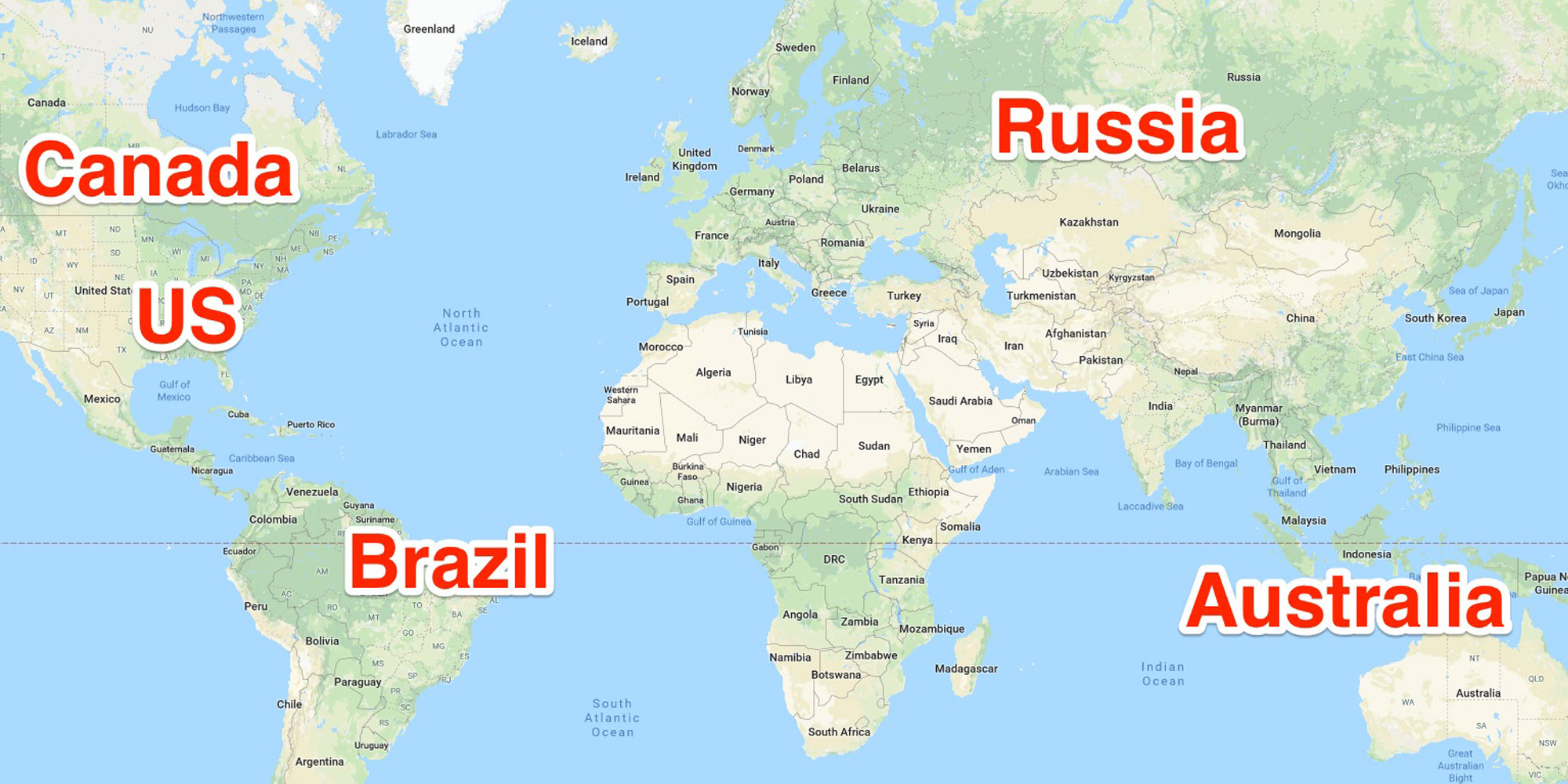Just five countries hold 70% of the world’s remaining wilderness, according to new research.
Researchers from the University of Queensland and the Wildlife Conservation Society identified the countries in a study published in the journal Nature.
It said that just 23% of the planet’s landmass can now be considered “wilderness” – places that do not have industrial level activity within them. Wilderness areas do not grow back once they are gone.
Here is where the world’s remaining wilderness can be found:
Australia: Desert

The researchers identified Australia’s deserts as one of the planet’s last remaining wilderness areas.
Australia's deserts are the only home for some animals, but the areas are under threat from climate change and mining and agriculture.
"Already we have lost so much. We must grasp this opportunity to secure the wilderness before it disappears forever," the researchers write.
The US: Alaska's arctic tundra

"Wild places are facing the same extinction crisis as species. Similarly to species extinction, the erosion of the wilderness is essentially irreversible," the researchers state.
Much of the wild places in the US are in Alaska, which has large areas of tundra.
The most severe threat to Alaska's tundra is climate change, but other threats include the construction of pipelines and the search for oil and gas, which can kill wildlife, according to National Geographic.
Canada: Boreal forest

Canada's boreal forests are one of the world's largest remaining wilderness areas, the researchers found.
"The boreal forest is the most intact ecosystem on the planet and holds one-third of the world's terrestrial carbon," according to the study.
But the forests are at increased risk from fires and drought due to climate change, as well as from activities like mining and forestry.
Brazil: The Amazon

Much of Brazil's Amazon rainforest has been destroyed by human activities like logging and rainforest.
But scientists around the globe are concerned over the election of Jair Bolsonaro, who has indicated that he wants to plow through the planet's biggest and most diverse tropical rainforest.
As Brazil's president, Bolsonaro will control nearly two-thirds of the Amazon, which cools the planet and is home to many indigenous people. He has argued that too many environmentally protected areas are hampering the country's development.
Russia

Russia has more wilderness areas than any other country on earth, the researchers found.
They did not include Antartica, because activities like mining are banned there.
They calculated that 100 years ago, only 15% of the planet's surface was used to grow crops and raise livestock. Today, more than 77% of the land (excluding Antarctica) and 87% of the ocean has been modified by the direct effects of human activity.

